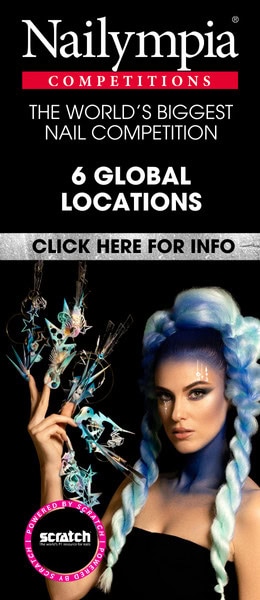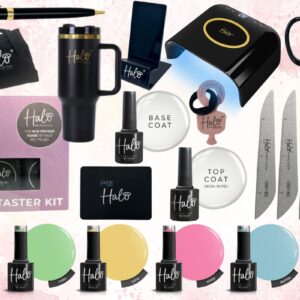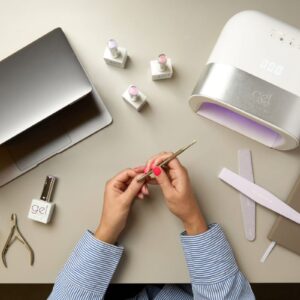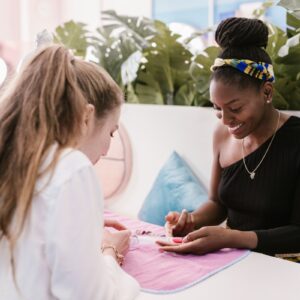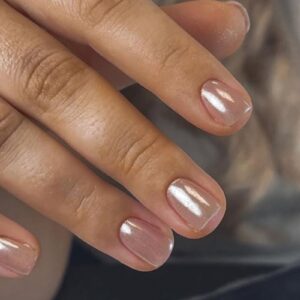Revealed: the 5 biggest men’s care trends of the moment
By Sophie Nutt | 22 May 2020 | Movers & Shakers, News

Men’s grooming has seen a slow burn within the beauty and personal care industries, however it is unarguably seen a growth in popularity year-on-year, as brands increasingly target the sector and retailers dedicate more space to it in stores.
The growth of the sector is simultaneous to the concept of the ‘modern ‘man’, meaning men’s expectations of themselves have evolved as a result of the influence of popularity culture and a shift in societal norms. It is no longer about basic toiletries – men’s grooming is now much more evolved.
In a report conducted by Cosmetics Business, the top five men’s care trends of the moment have been revealed:
1. Evolving masculinity
As conversations about toxic masculinity have rapidly started to grow, leading brands in the male grooming space launched campaigns designed to challenge stereotypes and progress the way men are portrayed in advertising.
“Men are in a collective transition towards a healthier and more matured version of masculinity,” says Fernando Desouches, managing director of New Macho, the male expertise division of brand agency BBD Perfect Storm.
“Today the image of men perpetuated by the beauty, fragrance and fashion industry is generally out of date; distant, emotionless, physically strong and always in control. In a context where men face increasing pressure on social media and around mental health issues, relaxing that harmful stereotype could be of great help.”
2. Male-focused make-up
A gender-neutral mindset has been trailing a path through beauty and personal care, with make-up brands in particular aiming to open these products up to consumers.
“We tend to take a more gender-neutral approach rather than going uber aggressive on the ‘men’s make-up’ take,” says Alex Doyle, CEO of Altr London. “While traditionally the stigma is quite strong around make-up for men, for the younger generations this is becoming less and less of a factor, which is great.
“I think what we’ve noticed is the brands focusing more on the ‘for men’ element tend to have an older clientele, whereas the gender-neutral brands tend to have a younger demographic. I think the two can work together, albeit in different spaces.
“We’ve definitely seen a huge growth in the area recently. I think we’re now approaching the tipping point whereby it becomes normal for guys to wear soft cosmetics like BB cream and concealer on a daily basis.”
3. Clean and green skincare
Demand for ‘clean’ skincare is soaring. As sales jumped by 39% in 2019 to account for 13% of the prestige skincare market in the US, according to The NPD Group, experts have agreed that the movement is here to stay.
According to Mintel’s Men’s and Women’s Beauty and Grooming Routines – UK, April 2019 report, 46% of men want their routines to be ‘clean’, suggesting that the ‘clean’ beauty trend will appeal to the male consumer.
Men are also interested in ethical considerations, with 16% being influenced by environmentally friendly packaging when buying facial skincare or haircare products, and 15% being swayed by cruelty-free claims.
With male consumers increasingly on the lookout for ‘clean’ and sustainable claims in their grooming products, expect to see a rise in products touting these credentials.
4. Empowering self care
From feminine hygiene to acne care, the beauty and wellbeing space has seen brands take an empowering and supportive attitude to the sensitive and personal issues consumers face. This movement has now emerged within male grooming, and poses a strong opportunity for further brands to open up more sensitive issues for men.
Recent figures from Mintel show that 71% of men agree that they are more likely than women to ignore health problems, and 33% of men aged 16-34 admit that feelings of embarrassment could prevent them from seeking help with their mental health. “There is scope to widen the message of ‘proactive health’ to other types of health issues, including mental health,” says Jack Duckett, Mintel’s associate director of consumer lifestyles research.
Fiona Glen, head of projects at The Red Tree believes that there is a ‘massive opportunity’ for more brands to speak out about men’s mental health in a helpful and supportive way: “The whole wellness link between mental wellbeing and grooming products is less prevalent in men’s than women’s, but with the statistics we see, it should be the other way round.”
5. Rebooting haircare
Despite significant demand for men’s styling and hair care, brands and retailers have yet to take advantage of the opportunities that this segment presents.
Market experts recommend that brands move beyond functionality, cut the confusion, take an expert positioning, create a natural look and get creative with colour in order to make the most of this category.
More education is needed within the category to overcome the confusion men feel about formats and how to achieve the look they want. With more young men being interested in dying their hair, there are opportunities for fresh innovation in the male hair colour category.
Read the full Cosmetics Business report here.

Read the latest issue




